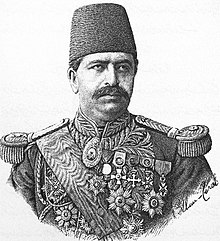펩타이드 YY
Peptide YY| 파이 | |||||||||||||||||||||||||
|---|---|---|---|---|---|---|---|---|---|---|---|---|---|---|---|---|---|---|---|---|---|---|---|---|---|
 | |||||||||||||||||||||||||
| |||||||||||||||||||||||||
| 식별자 | |||||||||||||||||||||||||
| 별칭 | PYY, PYY-I, PY1, 펩타이드 YY | ||||||||||||||||||||||||
| 외부 ID | OMIM: 600781 MGI: 99924 호몰로진: 3066 GeneCard: PYY | ||||||||||||||||||||||||
| |||||||||||||||||||||||||
| |||||||||||||||||||||||||
| |||||||||||||||||||||||||
| |||||||||||||||||||||||||
| 직교체 | |||||||||||||||||||||||||
| 종 | 인간 | 마우스 | |||||||||||||||||||||||
| 엔트레스 | |||||||||||||||||||||||||
| 앙상블 | |||||||||||||||||||||||||
| 유니프로트 | |||||||||||||||||||||||||
| RefSeq(mRNA) | |||||||||||||||||||||||||
| RefSeq(단백질) | |||||||||||||||||||||||||
| 위치(UCSC) | Cr 17: 43.95 – 44Mb | Chr 11: 102.11 – 102.11Mb | |||||||||||||||||||||||
| PubMed 검색 | [3] | [4] | |||||||||||||||||||||||
| 위키다타 | |||||||||||||||||||||||||
| |||||||||||||||||||||||||
펩타이드 티로신 티로신(PYY)으로도 알려진 펩타이드 YY는 인간에서 PYY 유전자에 의해 인코딩되는 펩타이드다.[5] 펩타이드 YY는 영양 공급에 반응하여 결장과 대장의 세포에서 방출되는 짧은 (36-아미노산) 펩타이드다. 혈액, 장, 그리고 다른 주변 요소에서 PYY는 식욕을 감소시키는 작용을 한다. 마찬가지로 중추신경계에 직접 주사할 때 PYY는 식욕을 감소시키는 식욕유전물질이기도 하다.[6]
과일, 야채, 통곡물로부터 섭취된 식이섬유는 장내 치임의 이염으로의 전달 속도를 증가시켜 PYY를3-36 높이고 포만감을 유도한다. 펩타이드 YY는 조어 단백질의 효소 분해의 결과로 생산될 수 있으며, 식품으로 섭취될 수 있다.[7]
구조
펩타이드 YY는 36개의 아미노산 중 18개가 췌장펩타이드와 같은 위치에 위치해 췌장펩타이드 계열과 관련이 있다.[8] 펩타이드 YY의 두 가지 주요 형태는 PP 접힘 구조 모티브가 있는 PYY와1-36 PYY이다3-36. 그러나 PYY 면역 활성 순환의 가장 흔한 형태는 PYY로3-36 수용체 Y 계열의 Y2 수용체(Y2R)에 결합한다.[9] PYY(Peptide3-36 YY)는 NPY와 췌장 폴리펩타이드에 대한 구조 호몰로리를 가진 34개의 아미노산으로 구성된 선형 폴리펩타이드다.
해제
PYY는 위장관 점막의 L세포에서 발견되며, 특히 염소와 대장에서 발견된다. 또한 식도, 위, 십이지장, 제주움 등에서 약 1-10%의 소량의 PYY가 발견된다.[10] 순환에서의 PYY 농도는 (식량 섭취 후) 간접적으로 증가하며 단식에 의해 감소한다.[9] 또한, PYY는 뇌계 내의 분리된 뉴런 집단에 의해 생성되며, 특히 메둘라 오블롱가타의 기간세포 망상핵에 국부화된다.[11] C. R. 구스타브센 외 쥐의 랑게르한스 섬에서 PYY를 생산하는 세포를 발견했다. 단독으로 관찰되거나 글루카곤 또는 PP와 함께 국소화되었다.[12]
함수
PYY는 NPY 수용체를 통해 그 작용을 발휘한다; 그것은 위 운동성을 억제하고 결장의 수분과 전해질 흡수를 증가시킨다.[13] PYY는 또한 췌장 분비를 억제할 수 있다. 식사에 반응하여 이음, 대장의 신경내분비세포에 의해 분비되어 식욕을 떨어뜨리는 것으로 나타났다. PYY는 위 비우기 속도를 늦춤으로써 작용한다. 따라서 그것은 식사 후에 소화와 영양소 흡수의 효율성을 증가시킨다. 연구는 또한 PYY가 뇌에 축적된 알루미늄을 제거하는 데 유용할 수 있다는 것을 보여주었다.[citation needed]
동물학
몇몇 연구들은 PYY의3-36 급성 주변부 투여가 설치류와 영장류의 먹이를 억제한다는 것을 보여주었다. Y2R 녹아웃 생쥐에 대한 다른 연구들은 생쥐들에게 어떤 식이성 효과도 보여주지 않았다. 이러한 발견은 PYY가3-36 식욕 저하(식욕 저하) 효과를 가지고 있다는 것을 나타내며, 이는 Y2R에 의해 매개될 것으로 제안된다. PYY-knockout 암컷 쥐는 체중과 지방 질량이 증가한다. 반면 PYY노크아웃 생쥐는 비만에 내성이 있지만, 조절 생쥐에 비해 지방량이 높고 고지방 식이요법을 할 때 포도당 내성이 낮다. 따라서, PYY는 또한 음식 섭취의 균형을 유지함으로써 에너지 홈스테이시에도 매우 중요한 역할을 한다.[9] PYY 경구 스프레이는 충만감을 촉진하는 것으로 밝혀졌다.[14] 침샘의 바이러스 유전자 치료는 장기 섭취 감소를 초래했다.[15]
비만과의 관련성
렙틴은 또한 먹이에 반응하여 식욕을 감소시키지만, 비만인 사람들은 렙틴에 대한 저항력을 발달시킨다. 비만인 사람들은 비만이 아닌 사람들보다 PYY를 덜 분비하고,[16] PYY를 체중 감량 약물로 직접 사용하려는 시도는 어느 정도 성공을 거두었다. 연구자들은 PYY 주입 후 2시간 후에 제공되는 뷔페 점심 식사 중 칼로리 섭취량이 비만 피험자는 30% 감소(P<0.001)하고 마른 피험자는 31% 감소했다는 점에 주목했다.[17]
일부 연구는 비만인 사람들이 PYY 이후의 순환 수준이 낮다는 것을 보여주었지만, 다른 연구들은 PYY의3-36 식욕 저하 효과에 대해 정상적인 민감성을 가지고 있다고 보고했다. 따라서 렙틴 민감도의 감소와 대조적으로 PYY 민감도의 감소가 비만의 원인 중 하나가 아닐 수 있다. PYY의 식욕부진 효과는 아마도 미래의 비만 치료제가 될 수 있을 것이다.[9]
단백질의 섭취는 PYY 수치를 증가시키므로, 배고픔을 줄이고 체중 감량을 촉진하는 실험 대상자들에게서 일부 유익성이 관찰되었다.[18] 이는 고단백 식이요법으로 인한 체중 감소를 부분적으로 설명할 수 있지만 단백질의 높은 열적 효과가 주된 원인으로 보인다.
위 우회술을 받는 비만 환자는 대사 적응이 두드러져 1년 후 당뇨가 자주 완화된 것으로 나타났다. 칼로리 제한의 교란 요인을 고려했을 때, β-cell 기능은 빠르게 개선되며, GLP-1 응답성의 영향을 받을 가능성이 매우 높다. 인슐린 민감도는 체중 감소에 비례하여 개선되며, PYY가 포함될 수 있다.[19]
참고 항목
참조
- ^ a b c GRCh38: 앙상블 릴리스 89: ENSG00000131096 - 앙상블, 2017년 5월
- ^ a b c GRCm38: 앙상블 릴리스 89: ENSMUSG00000017311 - 앙상블, 2017년 5월
- ^ "Human PubMed Reference:". National Center for Biotechnology Information, U.S. National Library of Medicine.
- ^ "Mouse PubMed Reference:". National Center for Biotechnology Information, U.S. National Library of Medicine.
- ^ 엔트레스제네 5697
- ^ Woods S. C.; D'Alessio D. A. (2008). "Central control of body weight and appetite". J Clin Endocrinol Metab. 93 (11 Suppl 1): S37–50. doi:10.1210/jc.2008-1630. PMC 2585760. PMID 18987269.
- ^ http://www.bio.umass.edu/biology/mccormick/pdf/Murashita%20et%20al%202009.pdf
- ^ DeGroot, Leslie Jacob (1989). J. E. McGuigan (ed.). Endocrinology. Philadelphia: Saunders. p. 2754. ISBN 978-0-7216-2888-2.
- ^ a b c d Murphy KG, Bloom SR (December 2006). "Gut hormones and the regulation of energy homeostasis". Nature. 444 (7121): 854–9. doi:10.1038/nature05484. PMID 17167473. S2CID 1120344.
- ^ Taylor IL (March 1985). "Distribution and release of peptide YY in dog measured by specific radioimmunoassay". Gastroenterology. 88 (3): 731–7. doi:10.1016/0016-5085(85)90144-1. PMID 3838162.
- ^ Glavas MM, Grayson BE, Allen SE, Copp DR, Smith MS, Cowley MA, Grove KL (2008). "Characterization of brainstem peptide YY (PYY) neurons". J Comp Neurol. 506 (2): 194–210. doi:10.1002/cne.21543. PMID 18022952. S2CID 16104580.
- ^ Gustavsen CR, Pillay N, Heller RS (2008). "An immunohistochemical study of the endocrine pancreas of the African ice rat, Otomys sloggetti robertsi". Acta Histochem. 110 (4): 294–301. doi:10.1016/j.acthis.2007.11.003. PMID 18406449.
- ^ Liu C, Aloia T, Adrian T, Newton T, Bilchik A, Zinner M, Ashley S, McFadden D (1996). "Peptide YY: a potential proabsorptive hormone for the treatment of malabsorptive disorders". Am Surg. 62 (3): 232–6. PMID 8607584.
- ^ "UF researchers use oral peptide spray to stimulate weight loss in animals". Dec 19, 2013.
- ^ Acosta A, Hurtado MD, Gorbatyuk O, La Sala M, Duncan D, Aslanidi G, Campbell-Thompson M, Zhang L, Herzog H, Voutetakis A, Baum BJ, Zolotukhin S (2011). "Salivary PYY: a putative bypass to satiety". PLOS ONE. 6 (10): e26137. doi:10.1371/journal.pone.0026137. PMC 3189958. PMID 22028819.
- ^ Alvarez Bartolomé M, Borque M, Martinez-Sarmiento J, Aparicio E, Hernández C, Cabrerizo L, Fernández-Represa JA (June 2002). "Peptide YY secretion in morbidly obese patients before and after vertical banded gastroplasty". Obes Surg. 12 (3): 324–7. doi:10.1381/096089202321088084. PMID 12082881. S2CID 40358403.
- ^ Batterham RL, Cohen MA, Ellis SM, Le Roux CW, Withers DJ, Frost GS, Ghatei MA, Bloom SR (September 2003). "Inhibition of food intake in obese subjects by peptide YY3-36". The New England Journal of Medicine. 349 (10): 941–8. doi:10.1056/NEJMoa030204. PMID 12954742.
- ^ Batterham RL, Heffron H, Kapoor S, Chivers J, Chandarana K, Herzog H, Le Roux CW, Thomas EL, Bell JD, Withers DJ (2006). "Critical role for peptide YY in protein-mediated satiation and body-weight regulation". Cell Metabolism. 4 (3): 223–233. doi:10.1016/j.cmet.2006.08.001. PMID 16950139.
- ^ Nannipieri M, Baldi S, Mari A, Colligiani D, Guarino D, Camastra S, Barsotti E, Berta R, Moriconi D, Bellini R, Anselmino M, Ferrannini E (November 2013). "Roux-en-Y Gastric Bypass and Sleeve Gastrectomy: Mechanisms of Diabetes Remission and Role of Gut Hormones". J. Clin. Endocrinol. Metab. 98 (11): 4391–9. doi:10.1210/jc.2013-2538. PMID 24057293.
추가 읽기
- Ekblad E, Sundler F (2002). "Distribution of pancreatic polypeptide and peptide YY". Peptides. 23 (2): 251–61. doi:10.1016/S0196-9781(01)00601-5. PMID 11825640. S2CID 23262522.
- Sandström O, El-Salhy M (2002). "Ontogeny and the effect of aging on pancreatic polypeptide and peptide YY". Peptides. 23 (2): 263–7. doi:10.1016/S0196-9781(01)00603-9. PMID 11825641. S2CID 6661540.
- Yang H (2002). "Central and peripheral regulation of gastric acid secretion by peptide YY". Peptides. 23 (2): 349–58. doi:10.1016/S0196-9781(01)00611-8. PMID 11825649. S2CID 44727734.
- Naruse S, Kitagawa M, Ishiguro H, Hayakawa T (2002). "Feedback regulation of pancreatic secretion by peptide YY". Peptides. 23 (2): 359–65. doi:10.1016/S0196-9781(01)00612-X. PMID 11825650. S2CID 12150464.
- Aponte GW (2002). "PYY-mediated fatty acid induced intestinal differentiation". Peptides. 23 (2): 367–76. doi:10.1016/S0196-9781(01)00613-1. PMID 11825651. S2CID 37633831.
- Hagan MM (2002). "Peptide YY: a key mediator of orexigenic behavior". Peptides. 23 (2): 377–82. doi:10.1016/S0196-9781(01)00614-3. PMID 11825652. S2CID 11208314.
- Mannon PJ (2002). "Peptide YY as a growth factor for intestinal epithelium". Peptides. 23 (2): 383–8. doi:10.1016/S0196-9781(01)00615-5. PMID 11825653. S2CID 33363834.
- Tseng WW, Liu CD (2002). "Peptide YY and cancer: current findings and potential clinical applications". Peptides. 23 (2): 389–95. doi:10.1016/S0196-9781(01)00616-7. PMID 11825654. S2CID 38479590.
- El-Salhy M, Suhr O, Danielsson A (2002). "Peptide YY in gastrointestinal disorders". Peptides. 23 (2): 397–402. doi:10.1016/S0196-9781(01)00617-9. PMID 11825655. S2CID 45335940.
- Imamura M (2002). "Effects of surgical manipulation of the intestine on peptide YY and its physiology". Peptides. 23 (2): 403–7. doi:10.1016/S0196-9781(01)00618-0. PMID 11825656. S2CID 6023629.
- Beglinger C, Degen L (2007). "Gastrointestinal satiety signals in humans--physiologic roles for GLP-1 and PYY?". Physiol. Behav. 89 (4): 460–4. doi:10.1016/j.physbeh.2006.05.048. PMID 16828127. S2CID 32598231.
- Eberlein GA, Eysselein VE, Schaeffer M, Layer P, Grandt D, Goebell H, Niebel W, Davis M, Lee TD, Shively JE, et al. (1989). "A new molecular form of PYY: structural characterization of human PYY(3-36) and PYY(1-36)". Peptides. 10 (4): 797–803. doi:10.1016/0196-9781(89)90116-2. PMID 2587421. S2CID 3857458.
- Facer P, Bishop AE, Cole GA, Aitchison M, Kendall CH, van Aswegen G, Penketh RJ, Rodek CH, McKeever P, Polak JM (1989). "Developmental profile of chromogranin, hormonal peptides, and 5-hydroxytryptamine in gastrointestinal endocrine cells". Gastroenterology. 97 (1): 48–57. doi:10.1016/0016-5085(89)91414-5. PMID 2721879.
- Tatemoto K, Nakano I, Makk G, Angwin P, Mann M, Schilling J, Go VL (1989). "Isolation and primary structure of human peptide YY". Biochem. Biophys. Res. Commun. 157 (2): 713–7. doi:10.1016/S0006-291X(88)80308-5. PMID 3202875.
- Lukinius AI, Ericsson JL, Lundqvist MK, Wilander EM (1986). "Ultrastructural localization of serotonin and polypeptide YY (PYY) in endocrine cells of the human rectum". J. Histochem. Cytochem. 34 (6): 719–26. doi:10.1177/34.6.3517149. PMID 3517149.
- Adrian TE, Ferri GL, Bacarese-Hamilton AJ, Fuessl HS, Polak JM, Bloom SR (1985). "Human distribution and release of a putative new gut hormone, peptide YY". Gastroenterology. 89 (5): 1070–7. doi:10.1016/0016-5085(85)90211-2. PMID 3840109.
- Lundell I, Blomqvist AG, Berglund MM, Schober DA, Johnson D, Statnick MA, Gadski RA, Gehlert DR, Larhammar D (1996). "Cloning of a human receptor of the NPY receptor family with high affinity for pancreatic polypeptide and peptide YY". J. Biol. Chem. 270 (49): 29123–8. doi:10.1074/jbc.270.49.29123. PMID 7493937.
- Bard JA, Walker MW, Branchek TA, Weinshank RL (1995). "Cloning and functional expression of a human Y4 subtype receptor for pancreatic polypeptide, neuropeptide Y, and peptide YY". J. Biol. Chem. 270 (45): 26762–5. doi:10.1074/jbc.270.45.26762. PMID 7592911.
- Hort Y, Baker E, Sutherland GR, Shine J, Herzog H (1995). "Gene duplication of the human peptide YY gene (PYY) generated the pancreatic polypeptide gene (PPY) on chromosome 17q21.1". Genomics. 26 (1): 77–83. doi:10.1016/0888-7543(95)80085-Z. PMID 7782089.
- Kohri K, Nata K, Yonekura H, Nagai A, Konno K, Okamoto H (1993). "Cloning and structural determination of human peptide YY cDNA and gene". Biochim. Biophys. Acta. 1173 (3): 345–9. doi:10.1016/0167-4781(93)90136-2. PMID 8318545.











